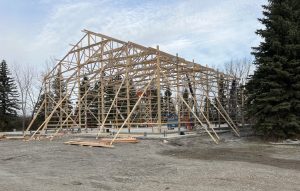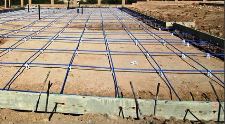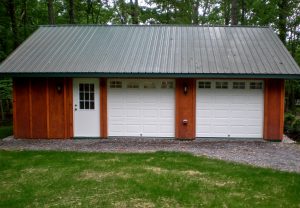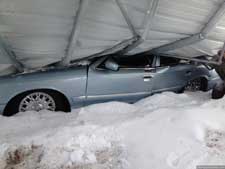Pole Barn Contractors
I recently read this posting on an internet forum:
 “Who can build a good pole barn in this area? Looking to build a building and need someone that can build a sturdy pole barn.”
“Who can build a good pole barn in this area? Looking to build a building and need someone that can build a sturdy pole barn.”
In my mind, this is a reasonable question. And (most importantly) the person posting the question is looking for “sturdy”. After all, who seriously wants to make a major investment into a brand new pole building, and have it NOT be sturdy?
The one response posted was:
“call john xxxxxxxxxxx on brown ridge.he is the best around and cheep.”
There are three factors involved in the purchase of any goods or services – price, quality and service. Only two of these three are going to be met in any case, so pick the important ones.
I always have “lowest price” issues, as any product can have enough quality eliminated to make it the lowest price. Let’s face reality. Pole buildings are conglomerations of value added design (hopefully engineering), lumber, siding, roofing and connections. All of these items are available at about the same cost to any supplier. There is not a magical “free forest” out there which spits out lumber for free.
Look at tennis shoes as an example….if low price was truly the driver, everyone would go to Goodwill and purchase slightly worn, probably off brand shoes. The reality is – chances are no one you know gets their tennies at Goodwill.
There is an entire litany of things which can be cheaped out upon, or left out to lower the price of a pole building and until it either falls down, or does not otherwise perform as expected. In most cases no one would be the wiser until things don’t work out so well. (Meaning the first good snowfall or windstorm and you are either picking up pieces in your yard or the neighbors.)
Now “John” might be an absolute pole barn contractor “craftsman”. I had a sub-contractor work for me once, who was upset when he framed up a 50’ x 60’ x 16’ pole building and it was 1/8 inch out of square! The pressure treated columns themselves varied in dimension from one surface to another and end-to-end by more than 1/8”. Builder Bob was a perfectionist, his workmanship was top notch, and it took him forever and a day to complete a building. Some of my other crews would put up two or three similar sized and featured buildings in the same time frame. The clients of all were equally happy with their new buildings, however Bob (who invested far more hours) was starving to death, as each crew was paid by the job, not the hour.
The best way to get a sturdy pole barn, is to shop for a quality pole building kit package which meets the needs and the required climactic loadings for where the building will be constructed.
Once a final price has been given, ask how much more it will be to have the plans and complete structural calculations sealed by a RDP (Registered Design Professional) and if any design changes will need to be made to the building to have the plans sealed. If the cost is more than what seems reasonable for engineering services (as well as the RDP’s liability) or the answer is the building will have to be changed to be sealed – do not walk – RUN away from it!
Lastly, look for a contractor who is licensed and bonded. Check out their credentials or read https://www.hansenpolebuildings.com/blog/2012/04/general-contractor/ for further details on how to find a contractor. Ask for references and although you know he will only give you those where he had “happy results”, check them out anyway. Ask to see his clients’ pole buildings. Sometimes walking into their pole barn structure will give you a feeling of “wow, this is a great building” vs. “this is NOT the quality craftsmanship I am looking for.”
It may seem tedious and time consuming to do all these “background checks”. Ultimately, the money saved may very well be well worth the time you invested in doing due diligence…to “do your homework.”










if it cost 3.00 per sq ft for the building how much does it cost to erect
Jerry ~ Construction costs vary greatly due to complexity of the building, dimensions, drive time for contractor and the costs of doing business in any given state. As a rough rule of thumb, if you are contracting directly with the person who is doing the work labor costs are generally about 50% of the costs of materials. In states with high workers comp/industrial insurance rates, labor costs can run 1/2 again or more.